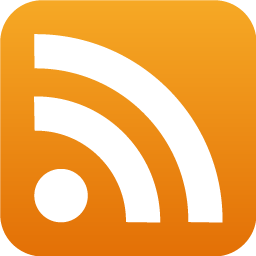Books I've read in 2023
Dec 31 2023
This is going to be a short post to maintain the habit of posting semi-regularly. Additionally, as it is the end of the year, it seems like a great time to reflect a bit.
I didn’t get to read a lot this year, but the books I’ve read were very interesting. I am looking forward to all the books I will be able to read next year. A friend of mine also has a nice booklist I will probably have a look at, in addition to a newfound curiosity regarding design, even though I can’t draw at all. So, I will probably get into some design books next year.
So, I am going to very quickly list a few books I’ve read in this year (2023).
- “Moonwalking with Einstein: The Art and Science of Remembering Everything” by Joshua Foer
If you’ve ever wanted to learn 1,000 digits of PI, then this is your book. It talks about memorization techniques that everyone can learn and that can help us remember a great deal of information that would otherwise be nearly impossible. By encoding multiple digits (let’s say 0-99) as an image that contains a person (use 100 different people), an action (again 100 different actions), and an object (100 objects), you can encode 6 digits in one single image using this Person-Action-Object (POA) system. So ‘Michael Jordan kicking a chair,’ for example, would encode the sequence ‘078823,’ which is quite memorable for our brain. Instead of memorizing something hard (6 random digits), you can memorize a single memorable image. Compared with a technique called memory palace, where you have a predefined route in your imagination you can walk through, you can remember hundreds or thousands of digits easily. Just walk a route you know well enough in your imagination and place one of these memorable 6-digit images at key positions within the route. If you need to remember all digits, just walk the same route in your imagination again and decode the digits from the image. A very interesting book, as I had never heard previously of these memory techniques.
- “Born to Run: A Hidden Tribe, Superathletes, and the Greatest Race the World Has Never Seen” by Christopher McDougall
An interesting anecdote/story-based book about an indigenous group in Mexico that uses only sandals and runs ultramarathons regularly. The main takeaway is that our shoes (with their comfortable soles and meter-high foam) are actually not good for our feet, as our ancestors didn’t have shoes, and our feet weren’t made for these materials. Due to the stabilizing foam, according to the book, we lose important muscles that help to stabilize the foot, and this can lead to problems with feet and gait. It is also less efficient compared to barefoot running, as a barefoot running style utilizes the rounded arch of our feet as well as the Achilles tendon in order to generate a spring-like effect that improves efficiency, which you do not have with regular shoes. After reading that book, I started jogging barefoot (with socks) on the elliptical in my gym, and after a period of adjustment due to needing a different running style, I really enjoy it now.
- “Trees and Hierarchies in SQL for Smarties” by Joe Celko
This is a book about how to create tree structures in SQL, as this is usually done in a poor manner due to uninformedness, and I have seen a few naive implementations of this that were cumbersome to work with. Therefore, I looked for books that described how to model trees in SQL properly and found this book. There are also some blog posts around that also cover this topic, but the book was useful as well. The next time I have to deal with trees in SQL, I now know about ‘Closure Tables’ as well as ‘Materialized Paths.’
- “Truth in Comedy: The Manual of Improvisation” by Charna Halpern
A book about improvisational comedy. I got a list of books, and this was part of it, and I read it mostly out of curiosity as I have no connection at all to improvisation but am interested in comedy. It mostly describes how to do an improvisation format called ‘The Harold’ and lists a very interesting collection of exercises a group of performers can do to improve their improvisation and group thinking skills for this format. Such books are usually a treasure as they give great insight into how a certain field works and how you can improve in it. Just for that, I was grateful to pick this book up.
- “Greenlights” by Matthew McConaughey
I am usually not into autobiographies, but I picked up this book from a book list and noticed that it was written by one of the few actors I really like. And the book has been a very positive surprise. It is a nice mix of. It has a bit of a ‘The world is my oyster’ vibe, but that can be forgiven as the book is quite inspiring in its way and gives a positive outlook to life that everyone can need.
